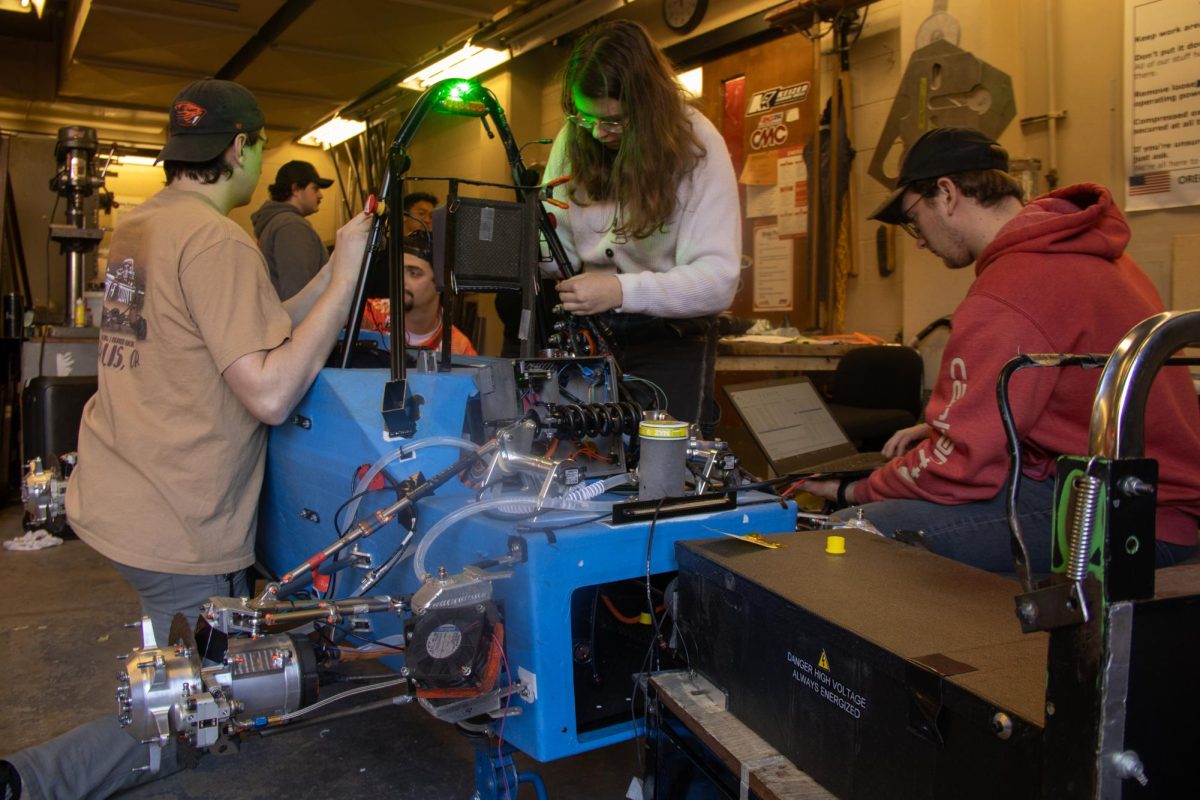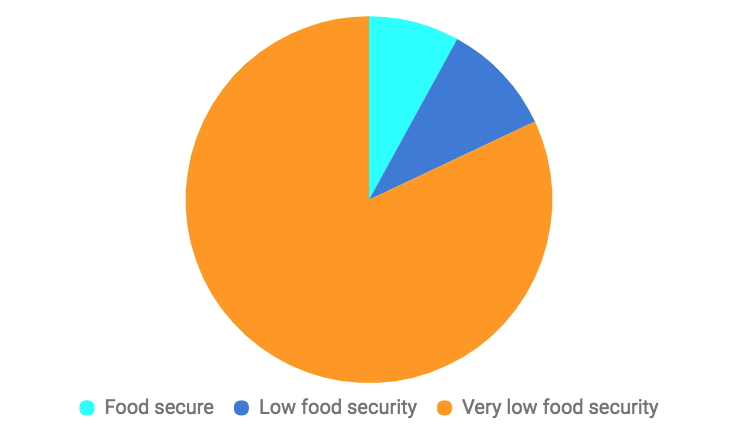Mealbux provides low-income students with food assistance
November 6, 2017
Human Services Resource Center helps eliminate student financial burdens
With a 17-credit course load coupled with an online class, students such as Justine Boringot, a senior at Oregon State University studying health management and policy, are facing a financial crisis. With only a dining job, tuition and living expenses can barely be covered at times, let alone expenses to pay for meals.
“Mealbux positively impacted my experience here at OSU, because it gives me a greater access to food on campus, without having to pay so much,” Boringot said via email. “It teaches me how accommodating the school really is when it comes to addressing the problems of financial and food insecurity, which a lot of students from low-income backgrounds come to face on a daily basis.”
Mealbux had been one of the most important food assistance programs for students over the past seven years, according to Brittney Chesher, a graduate intern for the Human Services Resource Center. It first started in 2009 for students who struggled to buy meals for themselves without having to worry about their financial situations day and night.
Mealbux is an easy and accessible program for students who struggle with finding funds to pay for food, according to Chesher. Individuals who participate in Mealbux receive funds directly to their Orange Rewards and can utilize these funds at any food location that accepts Orange Cash. Additionally, the HSRC can offer supplementary resources such as the OSU Food Pantry, Chesher added.
According to Janet Nishihara, director of the Educational Opportunities Program, educators understand that in order to learn, individuals must have their basic needs met first—shelter, food and emotional support.
“Without the knowledge that those needs are going to be met, how can students possibly dedicate their energy to learning, working at internships, developing skills in a lab—all those things that are part of a solid education?” Nishihara said via email.
All OSU students are eligible to apply for Mealbux, according to Chesher. Applications for the program can be found on the HSRC webpage under the Food Assistance tab. Applications are available each term beginning week 0 and close Friday of week one at 5 p.m., Chesher added.
Within the application, various personal questions are asked in order to try and understand why and how a student has become food-insecure, according to Chesher. In this way, HSRC can better determine how to provide resources to students.
“Previously, Mealbux was a paper application that required students to also submit financial statements. An example of that would be a pay stub from their employment office or a bill like that,” Chesher said. “It was a difficult application process that wasn’t collecting the full story of someone’s food insecurity until we revamped the application and implemented it this summer.”
According to Chesher, students may be concerned with the amount of food assistance they will actually receive based on the answers they give through the Mealbux application. In general, it’s a need-based program that gives funds to applicants, although it will prioritize more support for low-income students.
It is not guaranteed that all students who submit an application will receive support due to a limited amount of funds, according to Chesher. 903 students completed a Mealbux application in the Fall 2017 term and approximately 600 students were accepted for food assistance.
If a student is denied assistance through Mealbux, appeals may be made in regards to the decision, according to Chesher. Essentially, a student can request an appeal by sending an email to HRSC@oregonstate.edu providing an appeal statement that explains their circumstances beyond what is described in the food assistance application. The HSRC will then be in communication with the student regarding the appeals process, Chesher added.
According to Boringot, not all students are able to maintain a job while attending an academic institution for four or more years.
“Every day, students continuously struggle to pay rent, aside from food. They struggle to pay for their classes, as well as scrap for used textbooks from friends and strangers, just to get an easier bang for their buck,” Boringot said via email. “Sometimes, they even forgo it, in consideration of prioritizing their own physical nourishment. Having Mealbux is not only a partial savior, but a vital testament to those factors.”
Boringot is a low-income student with a family of four, including a single working mother. With responsibilities such as tuition and rent, food is also a huge burden that is placed upon him, but with Mealbux, it eases that burden by a great amount, according to Boringot.
“I work a student dining position on campus and minimum wage is not even enough to cover my nearly $600 rent, by the time my paycheck rolls around,” Boringot said in an email.
According to Chesher, Mealbux is funded by approximately $220,000 of student fees. It’s important for students to utilize this program because it’s a great resource for those who may need a little extra help. Students advocated for this student-fee funded program so that others can get the help they need, Chesher added.
Organizations such as the EOP strongly encourage students to utilize Mealbux and aid in the application process, according to Nishihara. In addition, Nishihara understands that the purpose of Mealbux is to help students and to showcase how vital the program really is.
“MealBux is a very important program, especially for students who are finding it more and more difficult to fund their education AND maintain a healthy lifestyle,” Nishihara said in an email. “With tuition, housing and general living costs always rising, students can find that they have to make a decision between eating regular, healthy meals and paying rent or buying books. That is a decision that no one should have to make.”
Boringot says he is thankful for Mealbux and recommends the program to other OSU students who are in need of food assistance.
“Mealbux brings me back to a much simpler time, when I was younger. It gives me the same comfort, as the free and reduced price lunch program brings to K-12 schools, within Oregon,” Boringot said. “Except the difference is, I’m in college now!”



















































































![Newspaper clipping from February 25, 1970 in the Daily Barometer showing an article written by Bob Allen, past Barometer Editor. This article was written to spotlight both the student body’s lack of participation with student government at the time in conjunction with their class representatives response. [It’s important to note ASOSU was not structured identically to today’s standards, likely having a president on behalf of each class work together as one entity as opposed to one president representing all classes.]](https://dailybaro.orangemedianetwork.com/wp-content/uploads/2025/03/Screenshot-2025-03-12-1.00.42-PM-e1741811160853.png)























